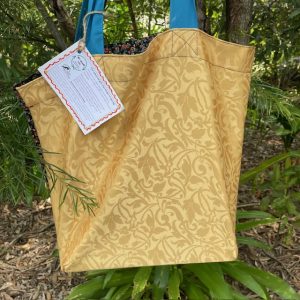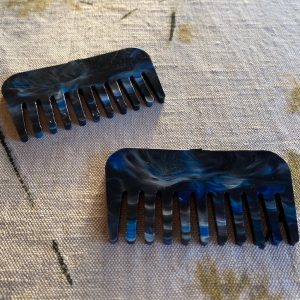Gulf Rivers Landcare
By Amie Wimberley
April 2025
This April, I was honoured to attend the 18th Outback Landcare Adventure Week—a project that’s part of the long-standing partnership between the Bulimba Creek Catchment Coordinating Committee (B4C) and the Gulf Rivers Landcare group. Each year, the B4C Environment Fund sponsors two volunteers to travel to Mt Isa to support local environmental efforts, including the management of several nationally significant weeds.
This year, I was fortunate to attend alongside my colleague from the B4C Landcare Services Unit, Callum Rawlins. Our hosts from Southern Gulf Rivers Landcare—Mark, Charles, and Paul—brought a wealth of knowledge and deep understanding of the landscape and the unique challenges it presents.
Our first stop was a three-day camp along the Corella River, upstream of Lake Corella.
Our main focus was locating and removing Bellyache Bush (Jatropha gossypiifolia), a distinctive plant with glossy purple to bright green foliage that stands out against surrounding vegetation.
We walked approximately 10 kilometres along the river and the southern shore of the lake, searching for Bellyache Bush. Mature seeds were collected, and the plants were then removed—either by hand or, for larger specimens, with cutting and herbicide treatment. In total, we removed around 170 plants.
Towards the end of our survey, we encountered a small but heavily infested patch we named “The Monster” anomaly. Within an area roughly the size of a basketball court, we pulled around 3,400 plants. Despite 17 years of active management, this area demonstrates how persistent and invasive this species can be, especially in such ideal conditions.
After leaving the Corella River, we travelled to an area of Mesquite (Prosopis glandulosa) located below the Mary Kathleen Tailings Dam. Mesquite, a legacy of past mining activities, has been left to spread unchecked in this location. Mark explained that this was the fourth year of treatment here. With most of the large trees already controlled, we focused on depleting the seed bank by treating regrowth using the basal bark method.
Days five and six took us to West Leichhardt Station, where we camped along Gorge Creek. Travelling on foot about four kilometres along the creek bed, we targeted Rubber Vine (Cryptostegia grandiflora), cutting the vines and applying herbicide to the stumps. Native to Madagascar, Rubber Vine forms dense thickets in riparian zones and can climb up to 30 metres into the canopy—its weight breaking branches and causing trees to die.
On our final day, we visited a new site along Duchess Road, on Gidgee country. Here, we treated Coral Cactus (Cylindropuntia fulgida), an introduced species once used around old mine sites for security. We continued the group’s success using a biological control—Cochineal insects—which feed on the cactus sap, eventually dehydrating and killing the plant. It was encouraging to see the lasting impact of past treatments.
The Outback Landcare Adventure certainly lived up to its name.
Although the week’s focus was on weed control, the experience highlighted the lasting impact of the choices we make today. Education is key to understanding these long-term effects and empowering better decision-making for the future. While many invasive species were introduced innocently enough, their control in remote areas is especially difficult due to limited resources and vast landscapes. Urban landcare groups often benefit from higher population densities and more volunteer support, while rural areas contend with population decline and shifting demographics.
Community collaboration is vital. Programs like Twin Rivers and the work of Gulf Rivers Landcare demonstrate how meaningful partnerships can help overcome these challenges and ensure long-term success.
We hope our efforts have made a positive and lasting contribution to the Gulf Rivers Landcare group’s important weed management work.
What Mark, Charles, Paul, and the Gulf Rivers Landcare team are doing goes far beyond weed control. Their work is purposeful and inspiring—helping to shape the next generation of environmental stewards while building bridges between urban and rural communities. It’s a true testament to the strength, commitment, and collective spirit of everyone involved.






